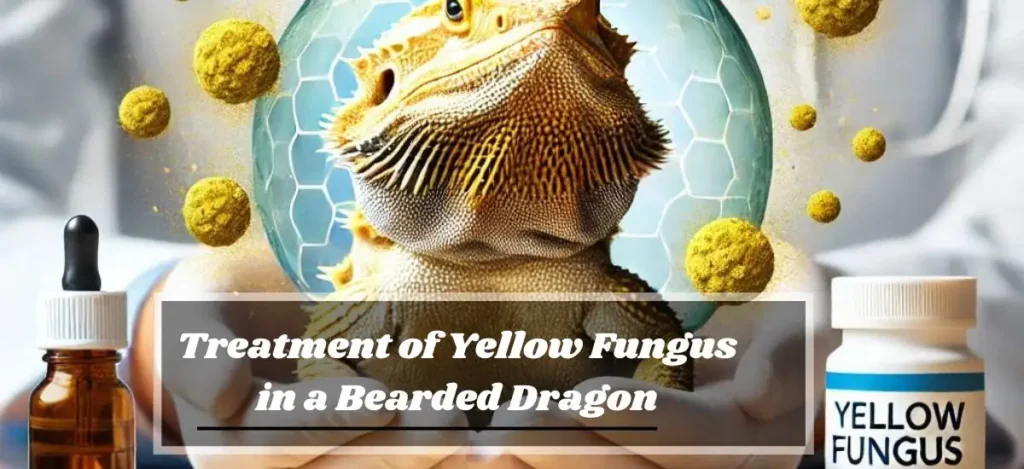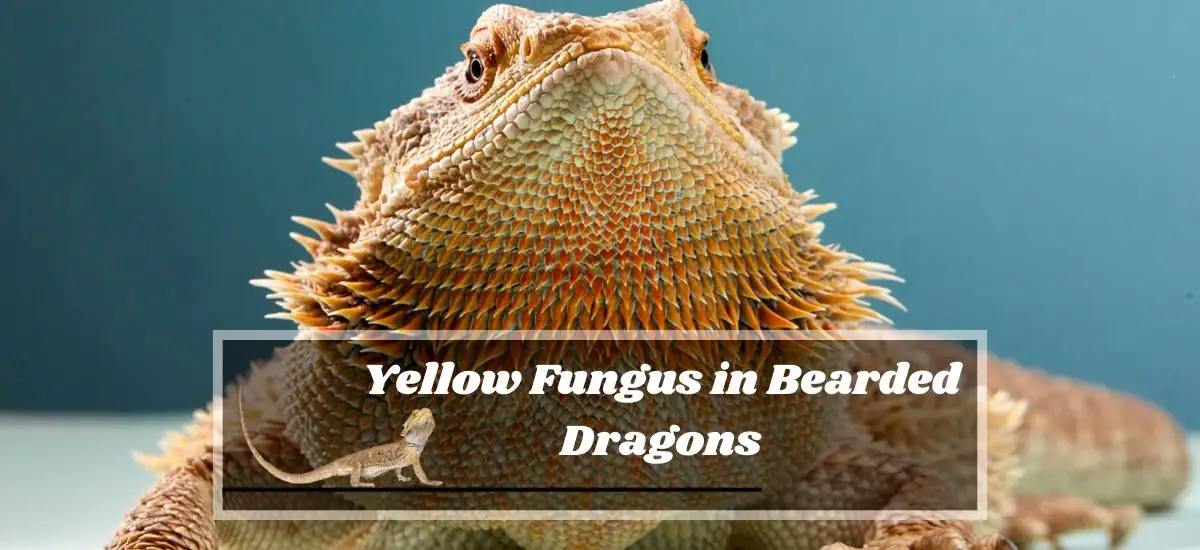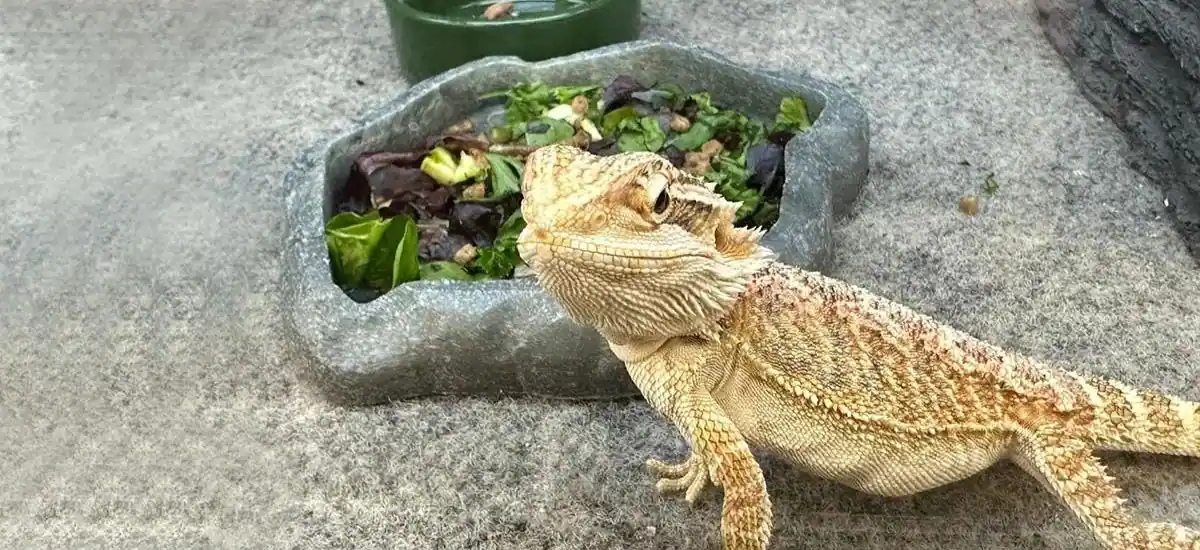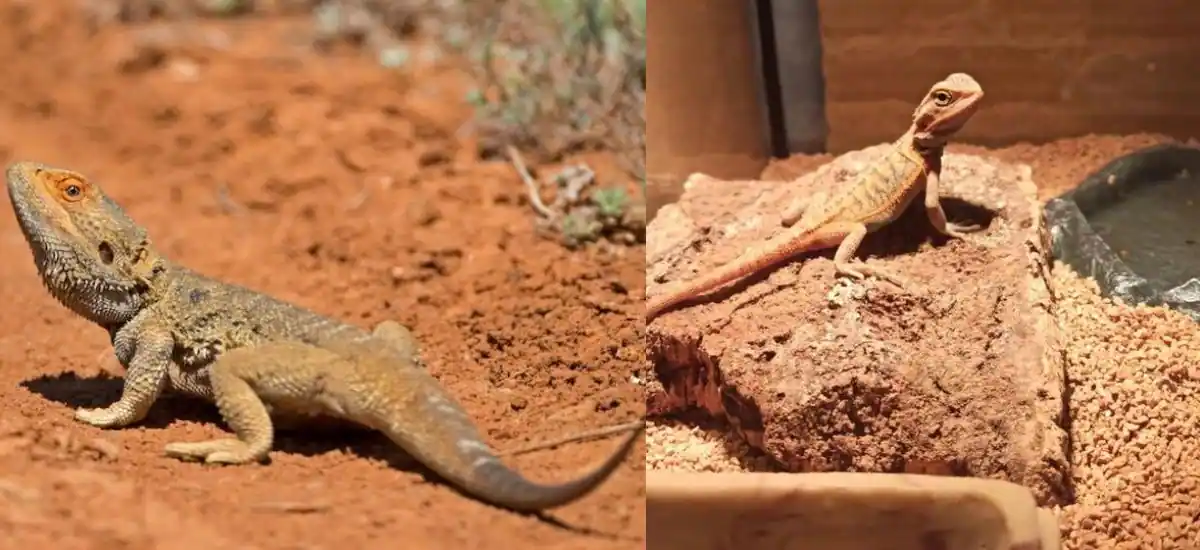Yellow fungus is a serious fungal infection that affects bearded dragons, scientifically known as Chrysosporium anamorph of Nannizziopsis vriesii. Awareness and early detection are crucial for effective treatment and the health of your pet. This guide will help you understand, recognize, and manage yellow fungus in bearded dragons.
Understanding Yellow Fungus
What is Yellow Fungus?
Yellow fungus, caused by Chrysosporium anamorph of Nannizziopsis vriesii, is a fungal infection that primarily affects the skin of bearded dragons. It leads to severe skin lesions and, if untreated, can be fatal.
How It Affects Bearded Dragons
The fungus invades the skin, causing discoloration, crusty patches, and eventually open sores. It weakens the dragon’s immune system, making them susceptible to secondary infections and overall health decline.
Recognizing the Signs
| 1. | Yellow, brown, black, or gray patches on scales which spread over time |
| 2. | Discolored areas may have cracked/crusty/fuzzy textures. |
| 3. | Frequent shedding, revealing rough scales underneath |
| 4. | Weight loss |
| 5. | Poor appetite |
| 6. | Sunken eyes |
| 7. | Slow wound healing |
| 8. | Sloughed lesions which are swollen badly, exposing ulcerated wounds |
| 9. | Dead body parts which eventually break or fall off |
| 10 | Restless behavior |
| 11. | Wounds that do not heal in a reasonable time frame |
Early and Advanced Signs of Yellow Fungus
| Stage | Symptoms |
|---|---|
| Early Signs | Discoloration of scales, dry crusty skin |
| Advanced Symptoms | Open sores, swelling, inflammation, behavioral changes |
Main Causes of Contracting Yellow Fungus
Environmental Factors
- Poor Hygiene: Unsanitary tank conditions can promote fungal growth, creating an ideal environment for infections to develop.
- High Humidity: Excessive moisture levels in the habitat can contribute to the growth of yellow fungus.
Contamination Sources
- Infected Substrate or Decorations: Using contaminated items in the tank can introduce the fungus to a bearded dragon’s environment.
- Cross-Contamination: Contact with other infected reptiles or contaminated surfaces can spread the fungus.
Predisposing Health Conditions
- Weakened Immune System: Dragons with compromised immune systems are more susceptible to infections.
- Previous Skin Injuries: Wounds or abrasions can serve as entry points for the fungus.
Diagnosis of Yellow Fungus
Veterinary Examination
- Physical Examination: A vet will perform a thorough physical check for visible signs like discoloration, sores, and lesions.
- Skin Scrapings and Biopsies: Samples are taken from affected areas to be examined under a microscope to confirm the presence of the fungus.
Laboratory Tests
- Fungal Cultures: Growing the fungus in a lab setting to confirm its presence and type.
- PCR (Polymerase Chain Reaction) Tests: Identifying fungal DNA to provide a precise diagnosis and tailor the treatment plan accordingly.
Treatment of Yellow Fungus in a Bearded Dragon

Medical Treatments
- Antifungal Medications: These include topical treatments like terbinafine or systemic antifungals to combat the infection.
- Antibiotics: are prescribedare prescribed any secondary bacterial infections that might arise due to the compromised skin integrity.
Supportive Care
- Proper Hydration and Nutrition: Ensuring the dragon stays hydrated and receives adequate nutrition is crucial for recovery.
- Wound Care and Management: Cleaning and treating wounds to prevent further infection and promote healing.
Environmental Management
- Disinfection Protocols: Regularly disinfect the tank and all accessories to eliminate any fungal spores.
- Optimal Humidity and Temperature Settings: Maintaining appropriate habitat conditions to discourage fungal growth.
Steps to Follow
- Isolate Your Beardie: Separate the infected dragon to prevent spreading the infection to other reptiles.
- Quarantine Your Buddy: Keep the infected dragon in a quarantine setup to monitor progress and manage the environment.
- Proper Hygiene and Sanitation: Regular cleaning and disinfecting of the tank and equipment.
- Prognosis and Outcome: Early treatment improves the chances of recovery significantly.
- Zoonotic Potential: Although rare, handle infected dragons with care to avoid potential transmission.
- Debridement: Surgical removal of dead tissue may be necessary for severe cases.
- Visit Your Vet: Seek professional veterinary help immediately for the best treatment plan.
Home Remedies for Yellow Fungus in Bearded Dragons
Natural and Alternative Treatments
- Betadine Baths: Soaking your bearded dragon in a diluted Betadine solution (10% solution) can help clean and disinfect the affected areas. Do this once or twice a day as recommended by your vet.
- Lamisil: Over-the-counter antifungal creams like Lamisil can be applied topically to affected areas. Always consult your vet before using.
- Raw Unpasteurized Honey: Apply raw honey to wounds, which has natural antibacterial and antifungal properties. This can aid in healing and prevent secondary infections.
Other Medications
- Use Under Vet Prescriptions: Always follow your vet’s guidance when using any medications. Home remedies should complement, not replace, professional veterinary treatment.
Prevention Strategies
Prevention Measures
- Practice Good Husbandry: Maintain a clean and well-sanitized tank environment to prevent fungal growth.
- Keep Your Dragon Clean: Regularly bathe and check your bearded dragon for any signs of infection.
- Separate Your Bearded Dragons: Avoid cross-contamination by housing infected dragons separately from healthy ones.
- Disinfect New Items: Always clean new toys, tank accessories, or the tank itself thoroughly before use.
Other Ways to Protect Your Bearded Dragons
- Start Your Dragon on Probiotics: Probiotics can help boost your dragon’s immune system.
- Let Them Bask in Direct Sunlight: Natural sunlight can help maintain your dragon’s health.
- Correct Diet: Provide a balanced and nutritious diet to keep your dragon healthy.
- Avoid Stress: Minimize stressors in your dragon’s environment.
- Regular Vet Checkups: Make vet visits a priority to catch issues early.
- Give Tons of Attention and Love: Regular interaction and care contribute to overall well-being.
Long-Term Management
Monitoring and Follow-Up Care
- Regular Veterinary Check-Ups: Schedule consistent visits to monitor health and catch any recurring symptoms early.
- Ongoing Observation for Recurring Symptoms: Keep an eye out for any signs of reinfection or new health issues.
Adjustments to Husbandry
- Continued Emphasis on Cleanliness: Maintain high standards of hygiene in your dragon’s habitat.
- Environmental Adjustments as Needed: Modify habitat conditions to support your dragon’s ongoing health and prevent future infections.
Table Suggestion: Preventive Measures for Yellow Fungus
| Prevention Measure | Description |
|---|---|
| Good Husbandry | Keep the tank clean and sanitized |
| Regular Cleaning | Bathe and inspect your dragon frequently |
| Probiotics | Boost your dragon’s immune system |
| Sunlight | Allow basking in natural sunlight |
| Balanced Diet | Provide nutritious and appropriate food |
| Stress Reduction | Minimize environmental stressors |
| Vet Checkups | Schedule regular veterinary visits |
| Hygiene of New Items | Disinfect new toys and accessories before use |
Image Suggestion:
Include images of bearded dragons basking in sunlight, clean tank setups, and examples of proper care routines. These visuals will help readers understand the importance of preventive measures and long-term management.
Case Studies and Personal Stories

Real-Life Experiences
- Success Stories of Recovery: Share stories of dragons that have recovered from yellow fungus. Highlight the treatments used and the journey to recovery.
- Challenges Faced by Owners: Discuss the difficulties encountered by owners in managing yellow fungus and how they overcame these challenges.
Lessons Learned
- Tips and Advice from Experienced Keepers: Provide practical advice from those who have successfully managed yellow fungus in their bearded dragons. This can include best practices, common mistakes to avoid, and recommendations for other owners.
FAQs: About Yellow Fungus in Bearded Dragons
Common Questions
- How Contagious is Yellow Fungus?: Yellow fungus can be highly contagious among reptiles if not managed properly. Strict hygiene and isolation measures are essential.
- Can Yellow Fungus Be Cured Completely?: With early detection and proper treatment, many bearded dragons can fully recover from yellow fungus.
- What Are the Costs Associated with Treatment?: Treatment costs can vary widely, including vet visits, medications, and ongoing care. Discussing options with your vet can help manage these costs.
Conclusion
Recap of Key Points
Early detection and proactive management are crucial in treating yellow fungus in bearded dragons. Proper care and hygiene play significant roles in prevention and recovery.
Importance of Proactive Care and Management
Taking immediate action at the first sign of symptoms can save your pet’s life. Regular veterinary check-ups and maintaining a clean environment are key.
Encouragement to Seek Veterinary Assistance
Always consult a veterinarian for the best care and treatment plan for your bearded dragon. Professional guidance ensures the most effective management of yellow fungus.





